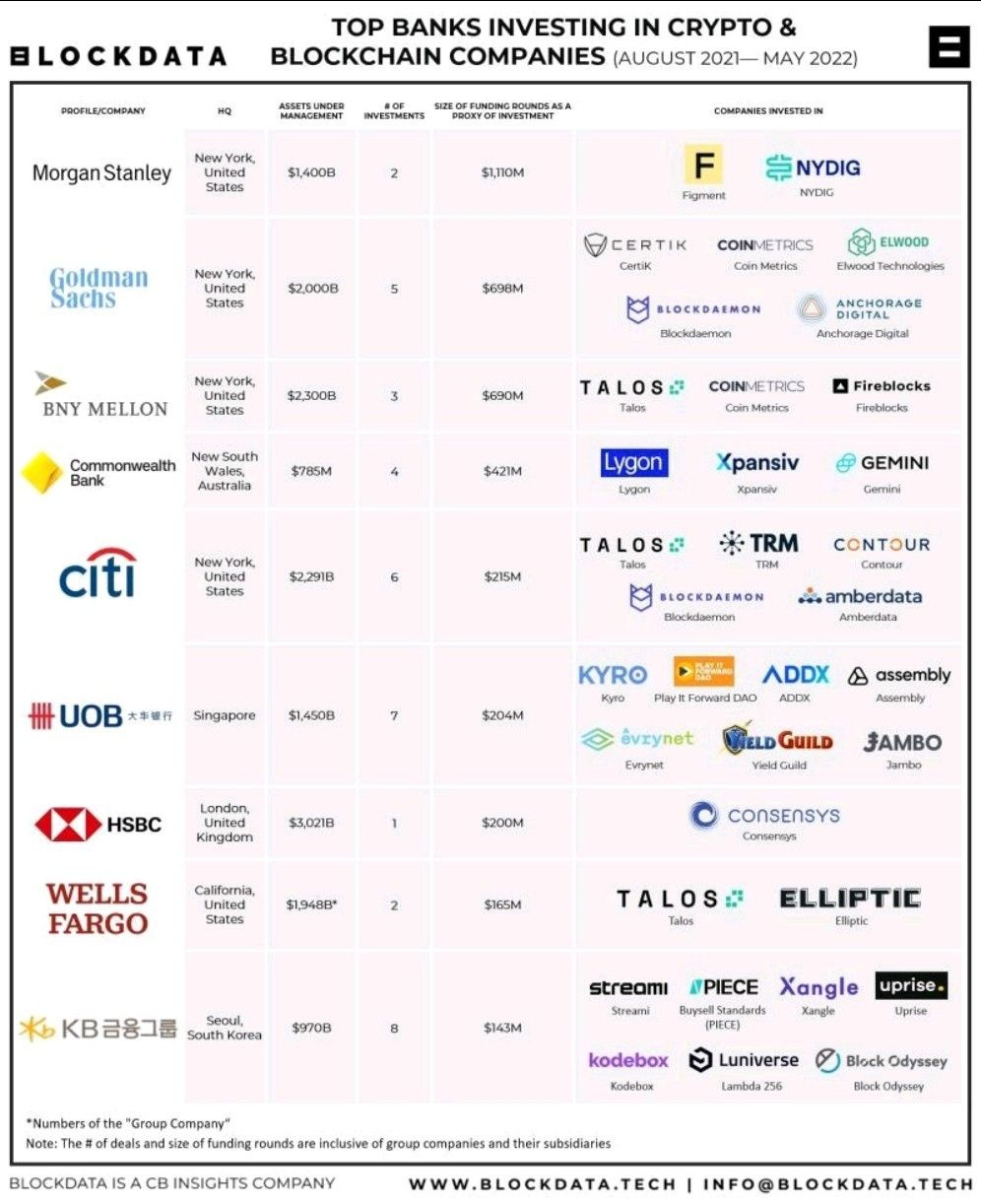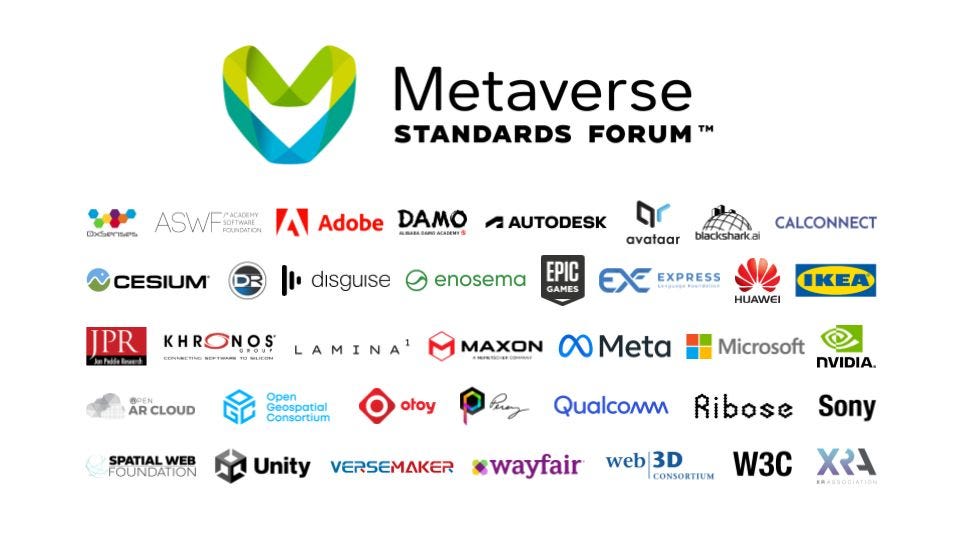Spatial Newsletter™ #032
This week we're about 3D sculptures, metaverse fashion news, Play-to-Earn (P2E), Web 3.0 vs. Web3, Blockchain, Bitcoin, central bank digital currencies (CBDCs), AI, quantum computing, & more!
It’s time to turn up the heat with the summer edition of Spatial Newsletter™! “I’m melting! I’m melting!” -Wicked Witch of the West (The Wizard of Oz)
Top 10 Metaverse Fashion News
If you’re hungry for more metaverse fashion, here’s the latest news provided by the Metaverse Fashion Council.
The endless potential of 3D sculptures in the metaverse
“Whether creators have a background in physical sculpture or come from a digital background, 3D sculptures in the metaverse unlock a new realm of creative potential.”
Check out projects from Narcissus Gallery (Decentraland), Hack the Tao by Hackatao (The Sandbox), The Meeting Place (Spatial), The Fabricant x Toni Maticevski — Sculptural Fashion-Art, and Hermine Bourdin: Where Sculpture Meets Dance.
From Narcissus Gallery courtesy of @AkiraReloaded
“Is this Play-To-Earn done right?”
asks Theo Priestley.
Diablo Immortal is a brand new free-to-play MMO from Blizzard Entertainment that includes a business model allowing players to unlock content through microtransactions. Blizzard Entertainment owns gaming franchises like Diablo and World of Warcraft.
One player used 600 Million World of Warcraft (WoW) Gold to purchase $50,000 worth of WoW Tokens via the game’s Auction House. These Tokens can be turned into $15 Blizzard Balance per purchase, which can then be used to purchase content in, for example, Diablo Immortal.
This is exactly what said crafty player did to be able to compete with other players who had just paid (we can presume, a lot of) real world money to get to the top of the game.
To Theo
“this is a perfect example of a combination of digital currencies and play-to-earn where the player gets the benefit and still enjoys the games and there isn't complex tokenomics or a web3 strategy in sight.”
Read the full story from Reddit.
Tim Berners-Lee: Web 3.0 doesn’t need blockchain
Back in SN#007 I described the distinction between Web 2.0 and Web3, but what I hadn’t (but could’ve) done was distinguish between ‘Web 3.0’ and ‘Web3’. (No, it’s not the space and the .0, you joker.)
In 2006, Tim Berners-Lee, the inventor of the World Wide Web, described ‘Web 3.0’ (7 years before Gavin Wood and his colleagues in the Ethereum white paper). Similar to that of Web3, Web 3.0’s mission is to build an architecture that decentralizes the web and gives users control of their data. The main difference is, yes, you guessed it, that Berners-Lee’s path to (re)decentralization doesn’t go through the blockchain.
“When you try to build that stuff [interoperability, speed, scalability, and privacy] on the blockchain, it just doesn’t work.”
So now he’s back with his platform Solid to take another crack at it. May the winds favor you on your journey, Berners-Lee.
Do blockchain’s decentralization or anonymity claims hold up?
That’s right, I’m back at it, too.
A new study by cybersecurity research firm Trail of Bits in cahoots with DARPA (hey, there they are again! It’s like finding Waldo) has found that:
“Four mining pools (collectives that consolidate mining power) make up 51 percent of the total Bitcoin mining activity, with two mining pools doing the same for Ethereum.
60 percent of Bitcoin traffic is confined to just three internet service providers
About 4.5 percent of bitcoin owners control a whopping 85 percent of the entire bitcoin pool”
Read the report itself to dig deeper into why these are a big deal besides that they demonstrate crypto/blockchain’s centralization.
(Thanks to Charlie Northrup for sharing.)
On top of that, another study unrelated to the one above, has found that Bitcoin (the blockchain) isn’t an “anonymous, democratizing force after all”.
In the case of anonymity,
“[A] technique [that the researchers use] called address-linking, which is a procedure that can tie crypto addresses back to their owners[…] essentially renders crypto’s anonymity void.
Okay, so, if the rhetoric is collapsing and blockchain is not necessary for the next ‘evolution’ of the web or even helpful in keeping the ‘crypto’ in cryptocurrencies, what then?
Enter
Central Bank Digital Currencies (CBDCs): The future monetary system
From the latest BIS report:
“Recent events have shown how structural flaws prevent crypto from achieving the levels of stability, efficiency or integrity required for a monetary system. Instead of serving society, crypto and DeFi are plagued by congestion, fragmentation and high rents, in addition to the immediate concerns about the risks of losses and financial instability[…]”
“New capabilities such as programmability, composability and tokenisation are not the preserve of crypto, but can instead be built on top of central bank digital currencies (CBDCs), fast payment systems and associated data architectures.”
(That’s two for two by Charlie Northrup.)
Isn’t what the report is describing the opposite of decentralization and anonymity? (Of course it is, that’s just a sarcastic jerk of a question.)
I mean, look at how much loot banks and other financial heavyweights are putting into the blockchain and crypto space (shared by Samson Williams).
DeFi doesn’t defy. (I couldn’t help it.)
In his “How to Responsibly Progress Digital Currency and Assets in the Emerging Crypto Economy” article, Jerry Cuomo, IBM Fellow, says, “The nascent digital asset and blockchain industries are not perfect, but they should not be feared.”
In the same article Andy Martin comments that CBDCs can help “allow moving from initial centralised approach to a more open decentralised approach over time in an elegant fashion”.
On the other hand, Jaron Lanier (I think you’ve heard of him before) writes in his opinion piece for CoinDesk that Bitcoin has
“become something of a perfect tool of state [or corporate] surveillance, revealing activities that many users believed to be protected by pseudonymity to sophisticated state security agencies while hiding transactions from communities of peers such as other developers, friends or community credit unions that would have been better placed to monitor them in context.”
This was also the essence of Dan Olson’s “the mother of all cookies” critique in The Problem with NFTs we shared in SN#012.
Either way, the wind seems to be blowing toward CBDCs (as the use case).
Of course, there are other potential uses for blockchain tech (see Dean Peterson’s Securing the Supply Chain of Tomorrow with with Blockchain and Smart Contracts or Keir Finlow-Bates’ latest idea about fractionalizing ownership of an apartment block using blockchain). These are worth exploring.
Still, I can’t help but wonder, how do Web3 folks respond to the growing use of the technology for unwanted centralization and surveillance?
Fret not, though, for all is not lost.
“Multiple industry leaders have stated that the potential of the metaverse [read: interoperability] will be best realized if it is built on a foundation of open standards.” They have come together to form… <Say the group’s name with a booming voice followed by an echo behind it>
The Metaverse Standards Forum!
Positive? Negative? I don’t know. We’ll have to wait and see. In the meantime, what is that in the heart of the MSF logo? Looks like the icon of a white fox to me. That’s cute.
I’ll tell you what’s not cute,
Calling Everything AI-
so stop.
(I’m just kidding, AI sounds cooler, market away.)
In SN #028, we broke down the difference between AI and ML. In SN #030, we asked if LaMDA was sentient AI. Now, Machine Learning pioneer Michael I. Jordan breaks it down further for us,
“People are getting confused about the meaning of AI in discussions of technology trends—that there is some kind of intelligent thought in computers that is responsible for the progress and which is competing with humans," he says. “We don't have that, but people are talking as if we do."
Instead,
“There's not been enough focus on the real problem, which is building planetary-scale machine learning–based systems that actually work, deliver value to humans, and do not amplify inequities."
Call me “Distracted by Science Fiction”, but “planetary-scale machine learning–based systems” still makes my ears prick up.
(Shared by Murat Durmus.)
A Huge Step Forward in Quantum Computing Was Just Announced: The First-Ever Quantum Circuit
“Australian scientists have created the world's first-ever quantum computer circuit – one that contains all the essential components found on a classical computer chip but at the quantum scale[…]
[Senior author of the paper and quantum physicist Michelle] Simmons says the achievement of moving from quantum transistor to circuit in just nine years is mimicking the roadmap set by the inventors of classical computers.
The first classical computer transistor was created in 1947. The first integrated circuit was built in 1958. Those two inventions were 11 years apart; Simmons' team made that leap two years ahead of schedule.”
There were, at least, two missed opportunities for the article’s author to use the phrase ‘quantum leap’ to make a nerd chuckle or, at least, roll their eyes. (Look at that lengthy title for goodness’ sake!) So you choose now to avoid a sensational headline, MSN?
Maybe, I’m focusing on the wrong thing here. It’s hot.
In July everything shuts down in Finland. So, this is as good a time as any to take my summer break from all things emerging tech. We’ll be back in August with a brand new season of Spatial Newsletter™-style journalissimo. Thank you for reading, spatial people! Enjoy your summer!
Joh, scorching in the shade sipping lemonade




